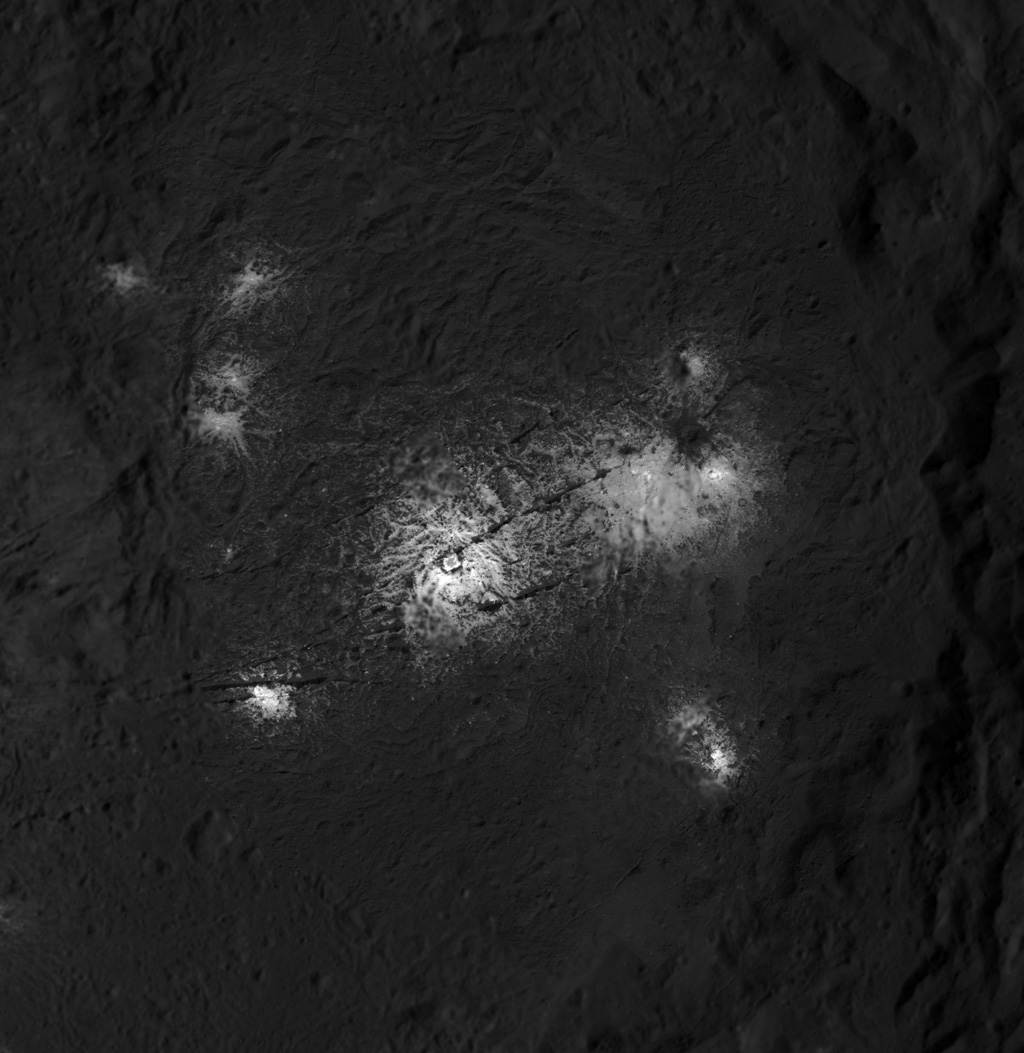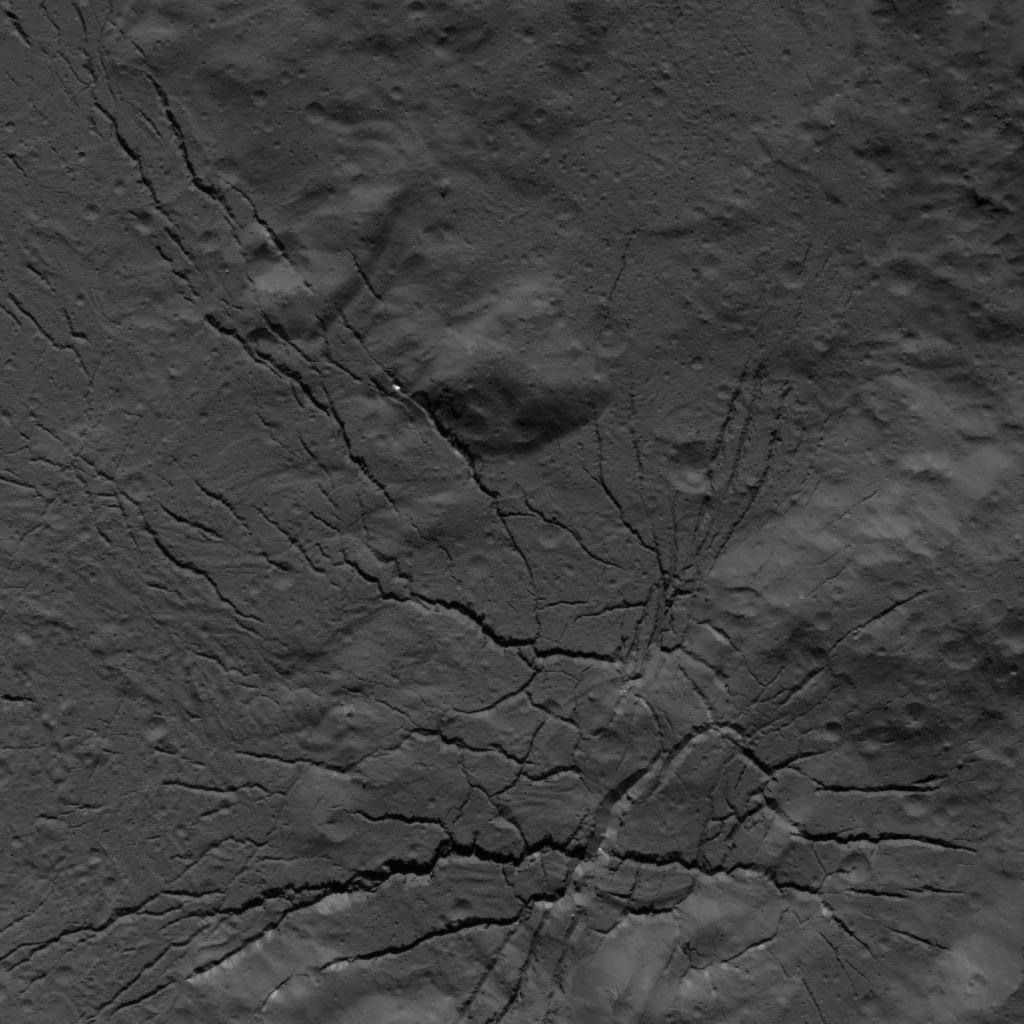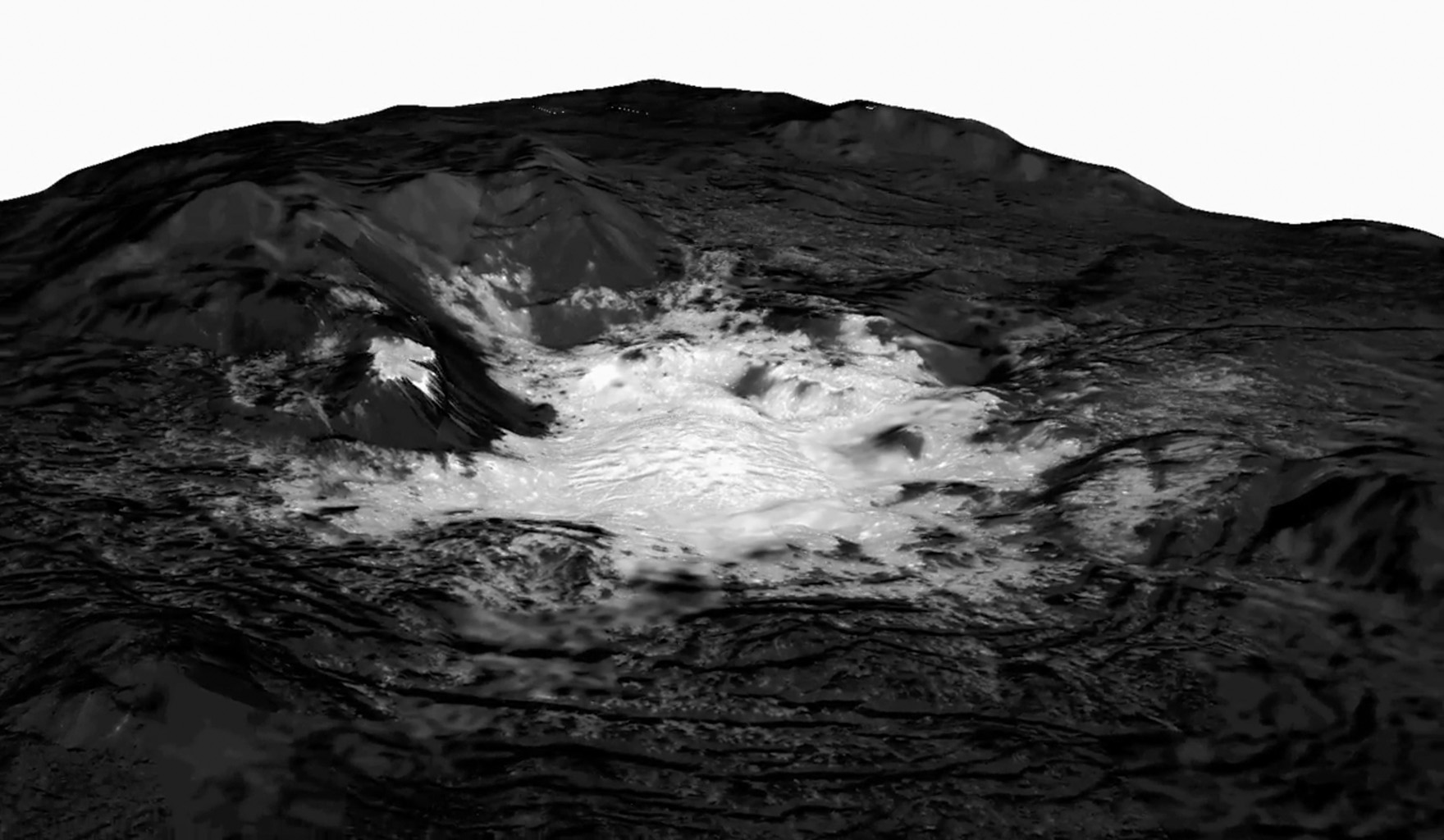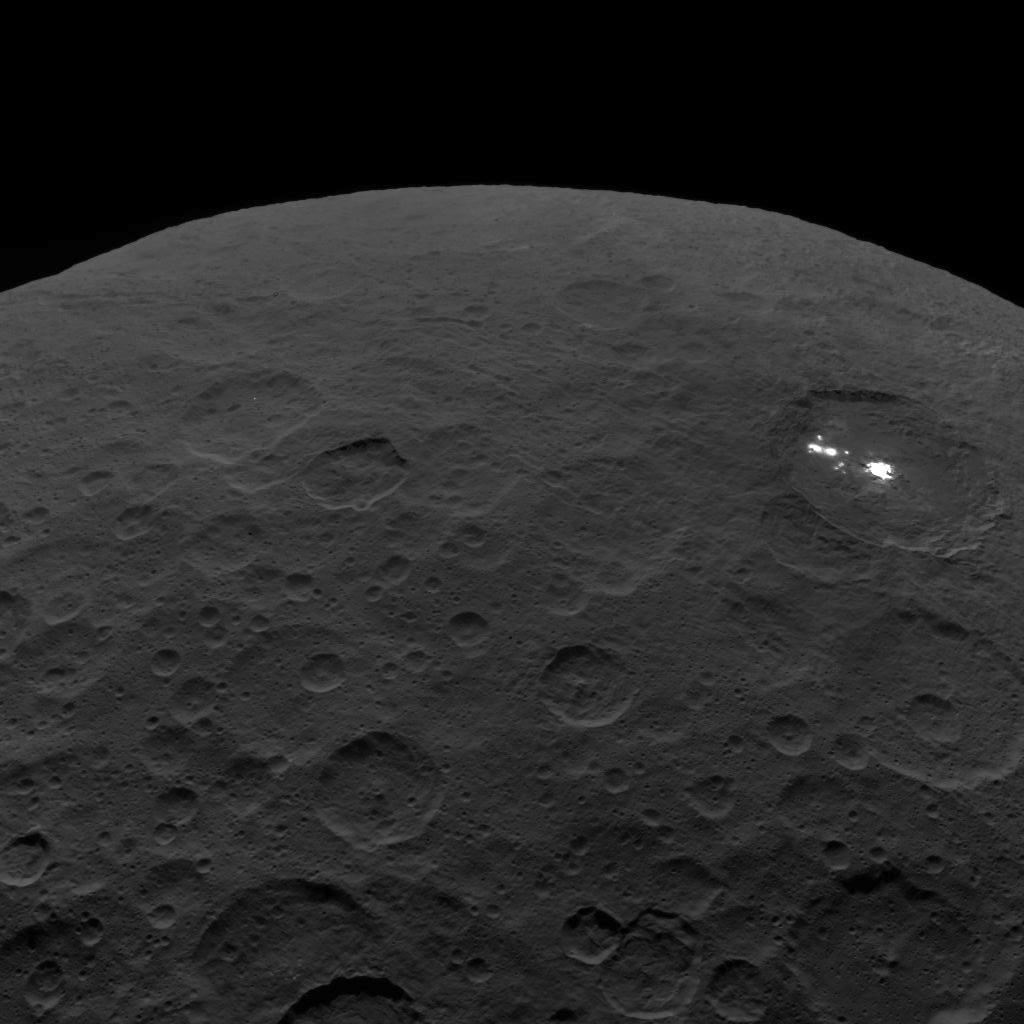Bubblecar said:
Well done Dawn.
Will this be a permanent orbit or will it eventually crash into Ceres?
I’m pretty sure it will crash into Ceres. There’s a note in one of the articles that it has a 99% chance of being still in orbit after 50 years. To me that means that it could crash any time after that.

This close-up image of the Vinalia Faculae in Occator Crater was obtained by NASA’s Dawn spacecraft in its second extended mission, from an altitude as low as 34 kilometers. This image is superposed to a similar scene acquired from an altitude of about 385 km.
This image reveals the intricate pattern between bright and dark material across this flow feature, which scientists will use to infer the history of this area, in particular the role of the fractures in the exposure of bright salts onto the surface.

Fracture Network on the Floor of Occator Crater. This image was obtained by NASA’s Dawn spacecraft on July 26, 2018 from an altitude of about 152 kilometers.

This mosaic of Cerealia Facula combines images obtained from altitudes as low as 35 km above Ceres’ surface. The mosaic is overlain on a topography model based on images obtained at 385 km altitude. No vertical exaggeration was applied.

Using information about Ceres’ gravity and topography, scientists found that Ceres is “differentiated,” which means that it has compositionally distinct layers at different depths. The most internal layer, the “mantle” is dominated by hydrated rocks, like clays. The external layer, the 40-kilometer thick crust, is a mixture of ice, salts, and hydrated minerals. Between the two is a layer that may contain a little bit of liquid rich in brine, it extends down at least 100 kilometers. The Dawn observations cannot see below 100 kilometers in depth. Hence, it is not possible to tell if Ceres’ deep interior contains more liquid or a core of dense material rich in metal.
I’m surprised that it doesn’t have an iron-nickel core. I bet it does.
(PS. Why does Chrome in Windows work so much better than Chrome in Android. Both are by Google. I couldn’t either copy image addresses, save images or see the text descriptions on Android).




